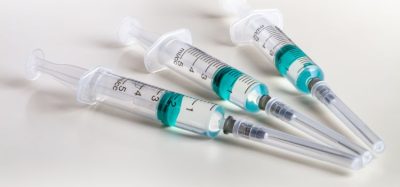Biopharma and the life sciences ecosystem: putting the foundations in place for a productive partnership
Posted: 7 July 2021 | Ahmed Bouzidi (ProductLife Group) | No comments yet
Even now 65 percent of drugs being approved come from biopharma companies and within a decade that is expected to rise to 85 percent. This is great news for a world hungry for new breakthrough treatments. As growth in pre-clinical and clinical work intensifies globally, Ahmed Bouzidi, Vice President of Biotech Strategic Development at ProductLife Group, explores the place of biopharma start-ups in the wider life sciences ecosystem – and the potential for new partnerships to accelerate their speed to market.


The biopharmaceutical industry, and innovative small and medium businesses in particular, has been centre stage in tackling COVID-19. Small or modest-size biopharma companies inherently possess several market advantages; they are flexible, adaptable and geared to taking novel approaches to medical challenges. Today biopharmaceutical medicines are also experiencing greater acceptance than they ever have previously by global populations. That is, confidence in more experimental or non-traditional products has soared during the pandemic, paving the way for biopharma small or medium-sized enterprises (SMEs) to become major players in the global market.
In 2017, about 65 percent of the drugs approved in the market were based on biotechnology, according to United Nations (UN) statistics, and this trend is expected to accelerate in the coming years. The huge demand for biopharmaceutical will be facilitated by an accelerating focus on research and related investment, fanned by the COVID-19 pandemic. Additionally, the ability of biopharmaceutical products to address previously untreatable conditions will fuel the introduction of innovative drugs to the market, bolstering the biopharmaceutical market over the next decade.
Filling gaps in today’s treatments
Biopharma companies are actively involved in the development of innovative molecules that fulfil the unmet needs of patients. With an increasing number of companies in the late-stage development of their biologics, it is anticipated that the biologics market will witness substantial growth in the future. The soaring number of product approvals and increasing demand for targeted therapies, as well as the rise in the development of biosimilars, will contribute to this growth.
But the right conditions need to be aligned to realise the potential and currently some regional markets are more favourable than others for the ambitious biopharma company.


Tomorrow, the market will be in part driven by the emergence of new diseases triggering the need for effective vaccines and novel therapies. This, in turn, will drive increasing demand for faster approval processes, a transformed regulatory landscape and growth in emerging fields – such as specialty therapies, vaccines, orphan drug, or personalised medicines for indications in the fields of cancer, chronic diseases and emerging infectious diseases. All of this will attract increasing attention from investors and big pharma.
Despite the rising interest in biopharma and all that regulators have done to ease these products’ path to market, the funding and pro-active support available for bringing drugs to market varies internationally. The biggest barrier for EU biopharma companies remains raising the capital necessary to bring products from early research to commercialisation. Certainly, investment in European biopharma companies is increasing, but late-stage financing in Europe lags well behind the US, where biopharma companies receive almost five times as much private funding as their European counterparts.
Global funding/support disparity points to the partnership option
The EU in particular has some work to do to create more conducive conditions in which biopharma innovators can thrive independently – certainly compared to the US and Asian markets. The gap is especially marked for biotech companies raising larger amounts in late-stage private-venture-financing rounds or on public markets. For example, biotech initial public offerings (IPOs) are three times larger on Nasdaq than on European exchanges, so European biotech firms tend to look to the US for growth capital.
The biggest barrier for EU biopharma companies remains raising the capital necessary to bring products from early research to commercialisation”
The German biotech company BioNTech is a case in point; not only did it collaborate with a US company, Pfizer, to develop its breakthrough messenger RNA (mRNA) COVID-19 vaccine, but it also chose to trade on the Nasdaq, in addition to the Frankfurt Stock Exchange, to raise more funds. Since 2012, almost a third of European biotech companies filing for an IPO have done so directly on US exchanges.
Moderna in the US was able to take its own mRNA COVID-19 vaccine to market, thanks to the backing of substantial, risk-tolerant public financing.
In China, optimum conditions and the ready available of generous funding in both Hong Kong and on the mainland, has led to three vaccines being produced in the last 10 months, comparable with the US’s record.
The most notable innovation to come out of Europe during the pandemic has been the AstraZeneca/Oxford vaccine but, originating in the UK, even this success has happened outside the EU (following Brexit).
At a research level, Europe is a global powerhouse with world-class research institutions, medical centres and hospitals that provide a strong basis for sourcing and developing scientific and clinical innovations. Unfortunately, this early innovation is not translating into patents for new medicines. Indeed, the EU has not only fallen well behind the US, but also well behind innovators in the Asia Pacific, in particular China and Japan.
In 2017 and 2018, European companies were responsible for originating 13 percent of biotechnology drugs approved by US Food and Drug Administration (FDA) while US biotech companies were responsible for 78 percent.
If Europe wants to command a share of the biopharma revolution, the EU needs to address the current conservatism, sluggish timelines and regulatory complexity.


In an ideal world, biopharma SMEs would be able to bring their own products to market, with the right support, retaining the benefits of those companies’ agility and maximising market competition, drug affordability and global access to a choice of treatments.
However, the pandemic has also shown what is possible when companies and scientists work together to pool their expertise. In the coming years, if innovation is to continue at the scale seen during COVID-19; if production is to be made more efficient and cost-effective; and if weaknesses in supply chains are to be overcome, the only way forward will be to extend and expand partnerships between organisations and countries.
Certainly, pharmacovigilance will play an essential role in ensuring the safety of patients, especially as pharma branches out into more innovative treatments, and biopharma SMEs will need help with this.
Predicting the future
Looking ahead, the role of the biopharma sector looks set to play an increasingly prominent role, pointing to opportunities both for bold start-ups and for larger and more established names ready to give them a leg up. Alongside COVID-19, major drivers fuelling the growth of the biopharmaceutical market include an increase in the elderly population; the surge in prevalence of chronic diseases such as cancer and diabetes; and an increase in obesity and sedentary lifestyles among many populations – added to the growing acceptance of biopharmaceuticals due to their ability to successfully address previously untreatable diseases.
Approval for newer and more affordable biopharmaceutical products – not just branded but also biosimilar products (due to patent expiry of major pharmaceutical products) – will give rise to lucrative opportunities for market players, especially linked to low-cost alternatives to prohibitively expensive treatments for novel immuno-oncology products and the like.
Asian players will also play an increasingly important role in addressing and overcoming drug shortages”
New players, particularly from Asia, will play a pivotal role in providing such medicines at a more affordable cost. Although US players conduct over half the world’s pharma R&D today and hold the intellectual property rights on most new medicines, according to the Pharmaceutical Research and Manufacturers Association (PhRMA), the Asia-Pacific region’s market share is expected to grow at a steady pace of CAGR 8.34 percent between 2020-2027, due to optimum conditions to support innovation as well as price reforms.
Asian players will also play an increasingly important role in addressing and overcoming drug shortages. In recent years, the prevalence of medicine shortages reported in most EU countries has increased exponentially. In France, medicine shortages numbered 1,450 in 2019, almost double those of the previous year and a staggering uplift from the 44 recorded a decade earlier. A recent survey of the European Association of Hospitals Pharmacists (EAHP) pointed to the rising shortages of oncology medicines, with 47 percent of respondents stating that oncology products are among the medicines most commonly in shortage (up from 39 percent in 2018).
For biopharma innovators with so much opportunity ahead of them, there is a lot to think about. Considerations must include strategies for product development and the need to fulfil regulatory obligations at all stages of development as well as pre- and post-market. To maximise their potential, these companies must ensure they are targeting the right markets with the right medicines, that they have access to the scale of funding they need at the right stages and that they are able to safely fast-track delivery of much-needed treatments at an affordable and sustainable price point, harnessing the right partnerships as they go.
About the author
Ahmed Bouzidi is Vice President of Biotech Strategic Development at ProductLife Group (PLG). He has been at the forefront of the biopharma industry for more than 30 years, in three continents. He is a Senior Associate of the Royal Society of Medicines and previously has been President of the European Biopharmaceutical Enterprises (EBE) and a board member of Vaccines Europe (VE).
Ahmed is contactable at: [email protected]
Related topics
Biologics, Biopharmaceuticals, Drug Development, Drug Markets, Funding, Industry Insight, Research & Development (R&D), Therapeutics, Vaccines
Related organisations
AstraZeneca, BioNTech, European Association of Hospitals Pharmacists (EAHP), Moderna, Pfizer, Pharmaceutical Research and Manufacturers Association (PhRMA), University of Oxford, US Food and Drug Administration (FDA)









